
Fat Cat Rods 1933 three-window kit
Text and Photos by Joe Greeves
There’s a fairly standardized formula to follow in the tried-and-true world of hot rods. High up on the builder’s punch list is an engine swap, followed by suspension upgrades that may not be ultra-modern, but usually improve upon the original hardware in some way. If the (typically low) budget can be stretched, interiors are usually fitted with a few modern conveniences and builders spend much of their time designing exterior styling touches to separate their cars from the crowd. Preserving the car’s patina has gained favor, honoring the vehicle’s vintage appearance, while allowing owners to forgo expensive bodywork and paint. If all goes well, hot rods are generally planned as daily drivers, as opposed to pampered trailer queens.
The big question is what’s the best way to get one in the family garage. Back in the day it was easy. The hot rod movement began in earnest during the 1940s and ’50s when discarded car bodies from the 1920s and ’30s could be had for a song. While many builders flaunted their real steel status, original tin became increasingly harder to find and expensive to rejuvenate. Naturally, the demand led to supply, primarily in the form of fiberglass bodies. These glass recreations often reflected traditional trends, like chopped tops, and most arrived in the driveway smooth enough that owners could postpone expensive paint, thanks to the factory gelcoat finish.
Aftermarket chassis manufacturers were also happy to fill the void, creating plug-and-play frames with independent front suspension and four-link rears, along with modern brakes, steering and shocks. While the modern parts came at a price, builders could create the classic ride of their dreams in a fraction of the time, avoiding months and sometime years of trudging through junkyards, hoping to source critical parts. The cobbled up beaters of the 1950s transitioned into mainstream legitimacy.
One of the builders making it easy for enthusiasts to create a modern version of the traditional hot rod is Steve Weber, along with his son Kenton and their six-man staff at Fat Cat Rods in Chatsworth, Georgia. Steve has been an active enthusiast all his life, deciding in 2006 to transition his small chassis fabrication shop in the family garage to a full-time, full service business. The plan was to offer a blend of high-quality products from multiple distributors, along with custom body, engine, and chassis work done in house. Fat Cat offerings are designed to be responsive to buyers, regardless of their personal skill level. They can select any level of completion, from partial kits to complete turnkey rides. Ford reproduction bodies are the flavors of choice, from 1932, 1933, 1937, and 1940 vintages, configured as three-windows, five-windows or Cabriolets. Other options include a 1941 Willys or a C2 Corvette.
The Green Mica 1933 Ford three-window coupe in the photos was originally built for Fat Cat owner Steve Weber, and is a good example of the company’s talent. Steve specified a 106-inch wheelbase chassis that began with American Stamping Corporation die-stamped frame rails, fitted with a custom K-member for rigidity. The John’s Industries 9-inch Ford rear is held in place with a stainless steel, triangulated four-bar setup. Up front, a drilled Pete & Jakes Super Bell forged steel I-beam axle is locked in place with traditional hairpins. The combination of Unisteer power steering, GM disc brakes, and QA1 adjustable coilovers guarantee improved handling, aided by the 17- and 20-inch chrome Ridler 695 rims and Kumho rubber. They all work together to plant the power from the carefully detailed GM 350 ci crate motor, fitted with an Edelbrock 600 cfm carburetor and custom dual exhausts. The combination sends 325 hp to the GM 350 automatic transmission, more than enough to properly autograph any driveway!
Body modifications enhance the original high boy design, in this case a fender less version with a 2.5-inch chop, suicide doors and shaved door handles, Additional details include 1932 Ford headlights with turn signals built in and round blue dot, Pontiac taillights in the rear. Orange and tan pinstriping accents the green mica paint.
Moving inside, creature comforts are a far cry from those pre-war jalopies, beginning with light and dark tan Ultraleather wrapping the power bucket seats, door panels and headliner. The green upper portion of the dash features a collection of Dolphin gauges, along with a Summit Racing banjo wheel on a chrome tilt column. Positioned in the lower tan portion of the dash, are the vents for the Vintage Air system, as well as the Pioneer Stereo playing through a pair of six-inch Infinity speakers. Hilbert Automotive Upholstery in Calhoun, Georgia did the stitch work.
The completed ride is a classic blend of vintage style with modern technology, making it equally at home on the road or the show circuit. Probably the best part, compared to old school salvage yard sourcing adventures, is that it’s instant gratification.
Being in the business, everything has its price, and Steve sold his green three-window to a customer, switching to one of his other rides in the meantime. As it turned out, the customer soon wanted to trade up for an even higher performance hot rod, and Steve was able to get his old car back in trade. “It was like welcoming the return of a family member,” Steve says with a smile.

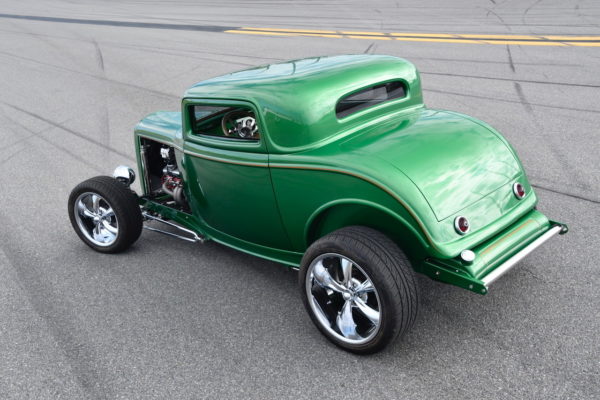
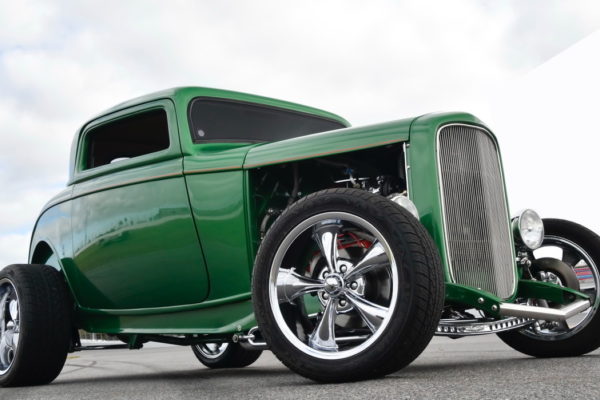
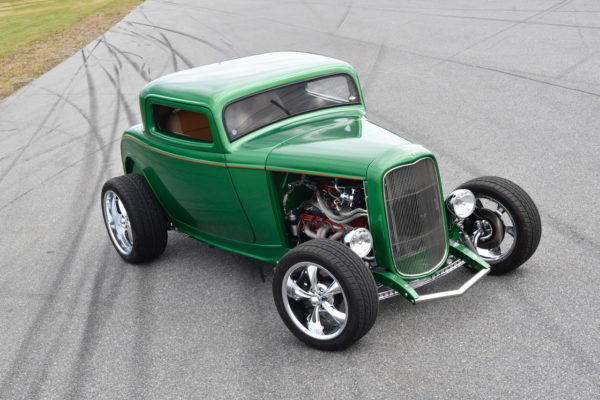
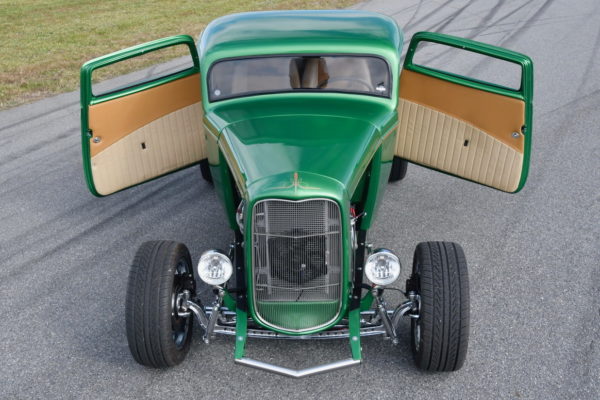
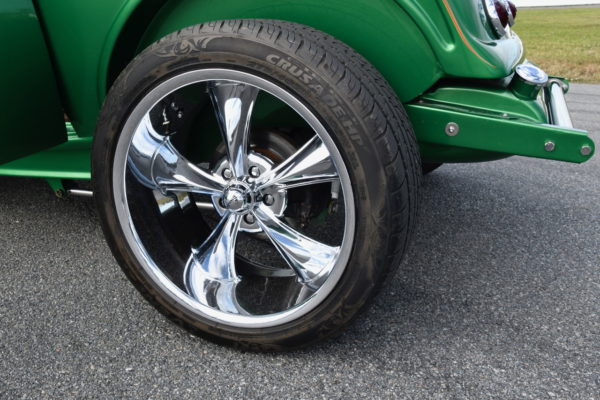
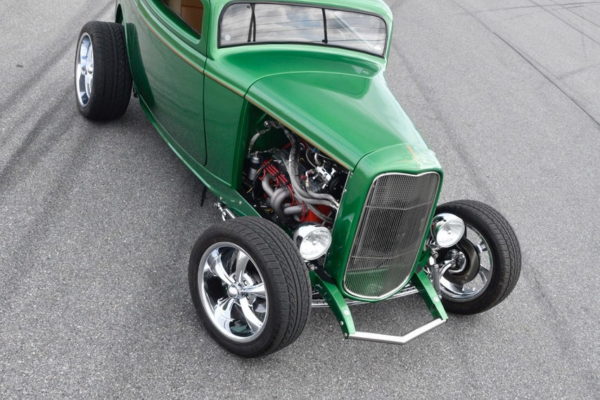
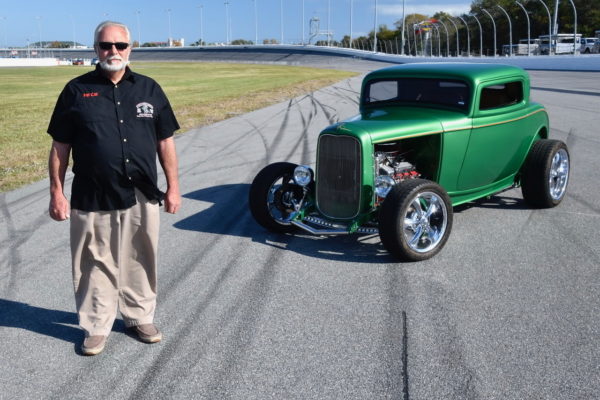
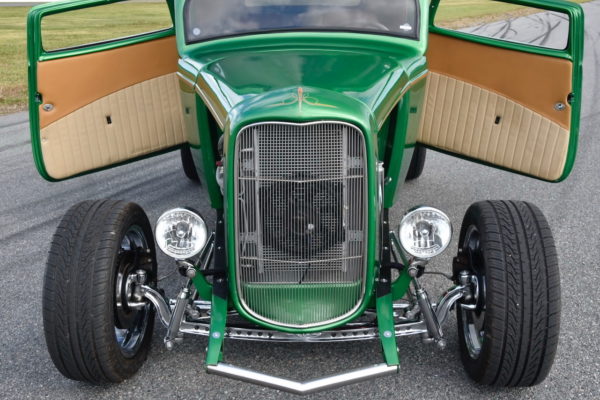
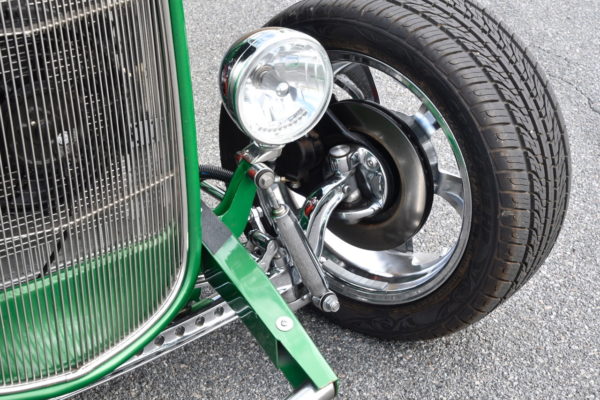
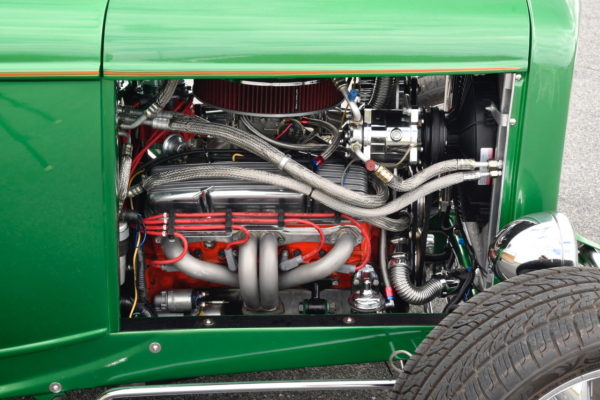
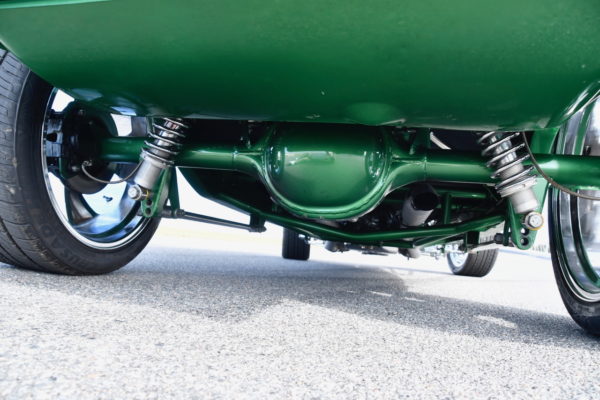
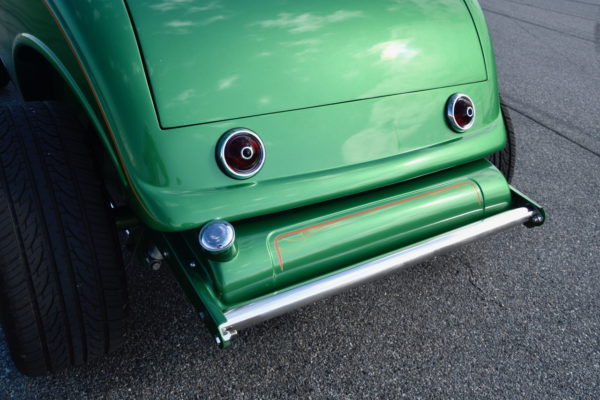
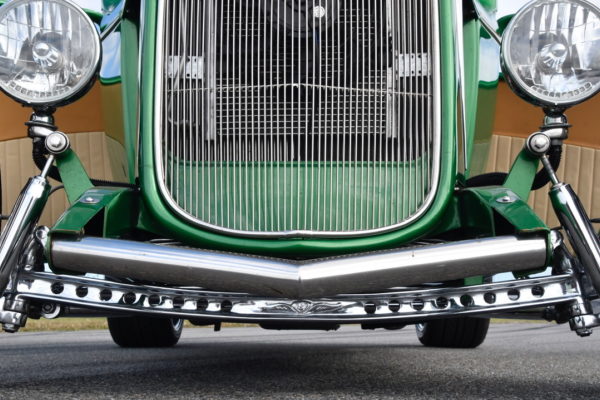
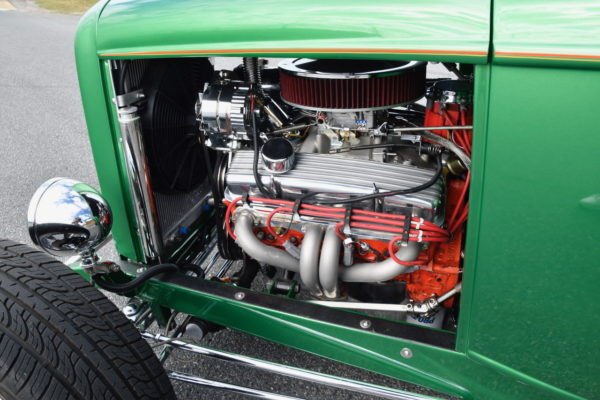
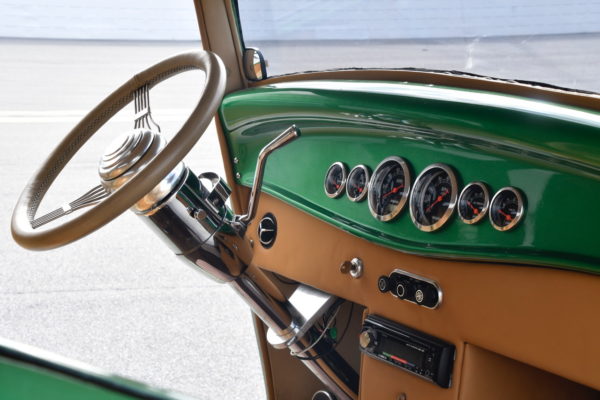
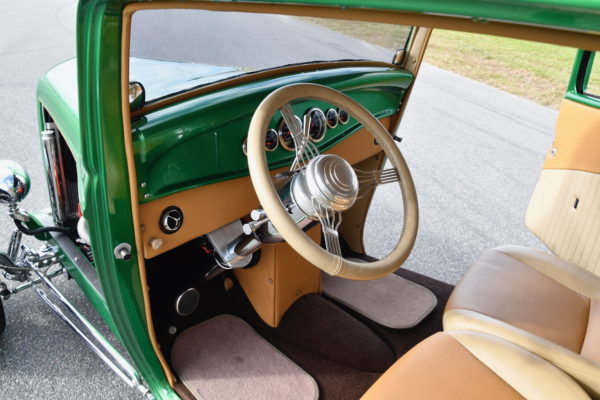
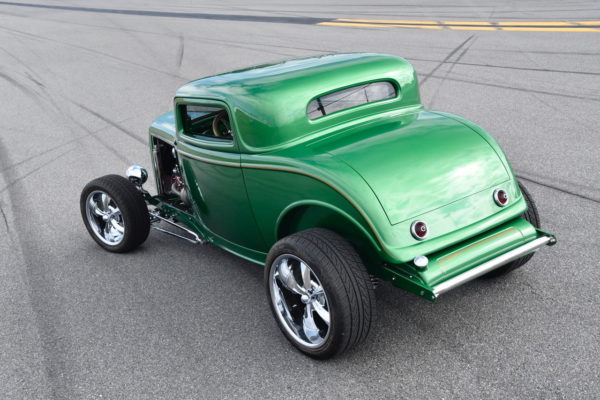
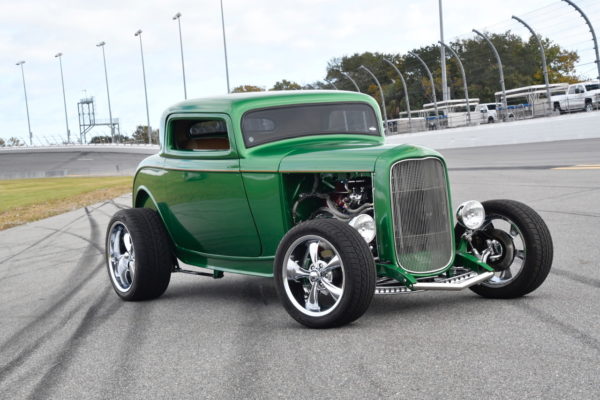
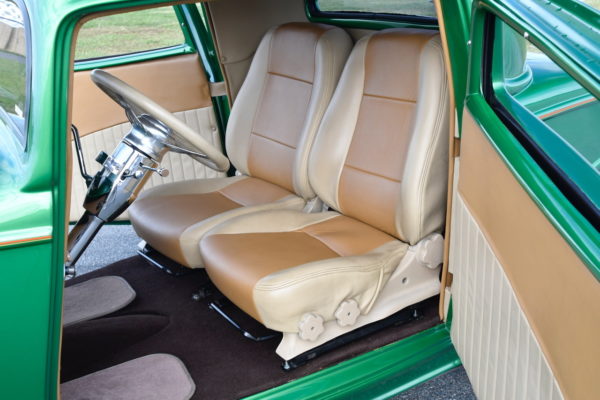
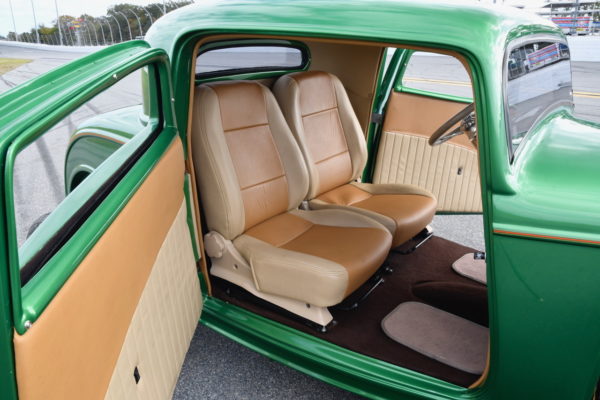
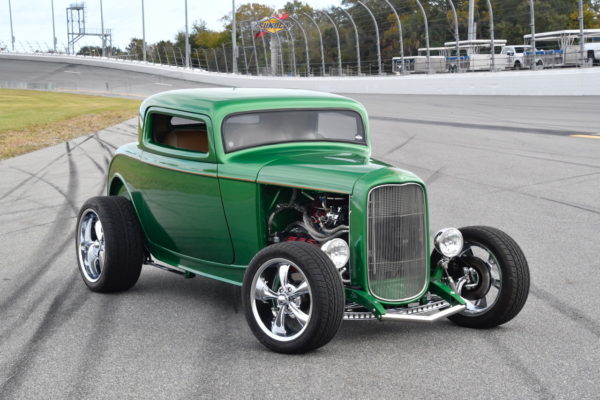
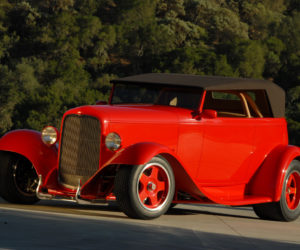
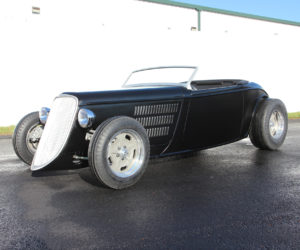
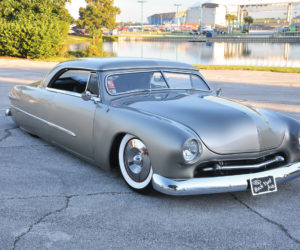
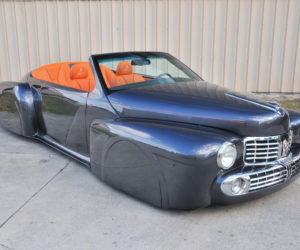
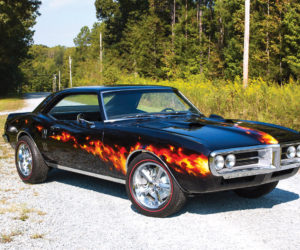
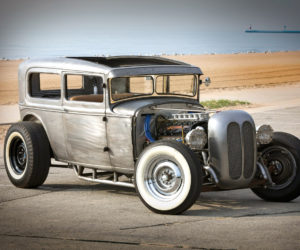




Comments for: Fat Cat’s ’33 Three-Window
comments powered by Disqus